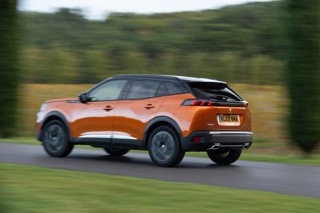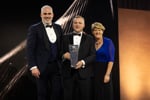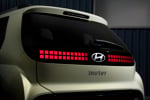Review
Driving and handling performance has not been touched. But the 307 gets a new face, featuring the 407/107 deep grille, larger headlamps and shorter aluminium bonnet, which dealers believe they can use to market the 307 as a brand new car.
Why this renewed belief? Because Peugeot promises this car will not be blighted by the warranty problems and electrical failures of its predecessor, which left customers dissatisfied and dealers out of pocket.
Peugeot has addressed the problems by reducing complexity in the 307’s electrical system.
Previously operating two systems concurrently – Vehicle Area Network (VAN) and Controller Area Network (CAN) – it now uses the Bosch CAN multiplex system already found in 407 and Citroën’s C4.
That means better reliability, faster network speed, improved diagnostics and more functionality. Customers can now choose from a longer options list that includes left/right rear parking sensors, bi-zone aircon for the first time and new visual display aids.
Last year the 307 sold 60,000 units, its best ever. In the first half of 2005, sales are down to 20,000, but with the new model on sale since July, dealers are expected to add 30,000 in the second half.
Peugeot has been cautious in its 2006 predictions, sticking with 50,000 units in a market expected to dip slightly. It also accepts the marketplace is much tougher. In 2001, when the 307 was launched, it faced 29 competitor models; now it faces 51.
Sales will be divided across four body derivatives: hatchback will account for the bulk at 76%, SW will take 11%, estate 9% and CC, which went on sale this month, 4%. Both SW and estate have a 10cm longer wheelbase, improving legroom for rear passengers.
Peugeot has simplified the trim range to five badges to make it easier for dealers to sell on a value for money proposition. Each model has a distinct look according to its position within the line up. The top spec Feline gets a sports front grille with chrome finish, 17in Aidel alloys and front fogs, while the S gets honeycomb grille and 15in Apollo alloys, for instance.
Prices rise for most models by around £200, but drop £200 for the SE badge as Peugeot looks for dealers to sell higher up in the range. “This is where most of our rivals sell their cars,” says Peugeot 307 product manager Dan Gilbert.
Dealers will be supported by a marketing spend double that of recent launches 107 and 1007, to include TV ads and targeted mailings to existing and potential customers.
Peugeot has dropped the poor-selling, entry-level 1.4-litre HDi diesel, widely acknowledged as underpowered, and replaced the 2.0-litre 90bhp HDi with the 90bhp 1.6-litre HDi developed with Ford (also available are 1.6-litre 110bhp and 2.0-litre 136bhp diesels). It has also planted the CC’s 2.0-litre 180bhp petrol unit into all models (badged Feline) and developed a new 140bhp version of the 2.0 unit, which complement entry 1.4- and 1.6-litre petrols.
Typical customers are aged 35-plus (30-plus for CC) split roughly 60% men, 40% women. SW and estates will appeal to couples with children, while most buyers (62%) take the CC as a second car.

Behind the wheel
Driving and handling have not changed from the original 307, so expect light, impersonal power steering, sensitive brakes, comfortable ride and smooth cornering.
It’s no sports car – but that’s the point. Couples with children tend to drive in a more measured way, entirely appropriate with the 307’s characteristics.
That’s not to say it can’t up the pace when required.
The 2.0-litre 136bhp diesel is excellent, more than a match for the 2.0-litre 140bhp petrol and not far off the 180bhp. Mid range it’s more than a match, thanks to the 240lb ft torque peaking at 2,000rpm.
Gripes remain about the pedals. Because of the switch from left-hand- to right-hand drive, there’s nowhere for your left foot to rest. The pedals are too close together, which is not ideal for those with larger feet.
Strengths: Good diesels, CAN multiplex
Weaknesses: Pedal position, light steering
Opportunity: New looks mean dealers can sell as a new car
Threat: Other rivals undergone greater changes
The USP: More flexible, less problems
Price: £11,200-17,000 (hatch) £14,200-17,700 (SW)
Transmission: 5spd manual, 4spd auto
Performance: 1.4 90bhp 0-62mph: 12.8sec; top speed: 107mph. 1.6 110bhp 10.7s/118mph. 2.0 140bhp 8.9sec/127mph. 2.0 180bhp 8.2sec/137mph. 1.6HDi 90bhp 12.5sec/111mph. 1.6HDi 110bhp 11.2sec/117mph. 2.0HDi 138bhp 9.8sec/125mph
Efficiency: Petrol 43.5mpg-33.6mpg, 155-200g/km CO2. Diesel 57.6-52.3mpg, 129-142g/km CO2
Rivals: Focus, C4, Astra, Megane
Factsheet
No information available.














